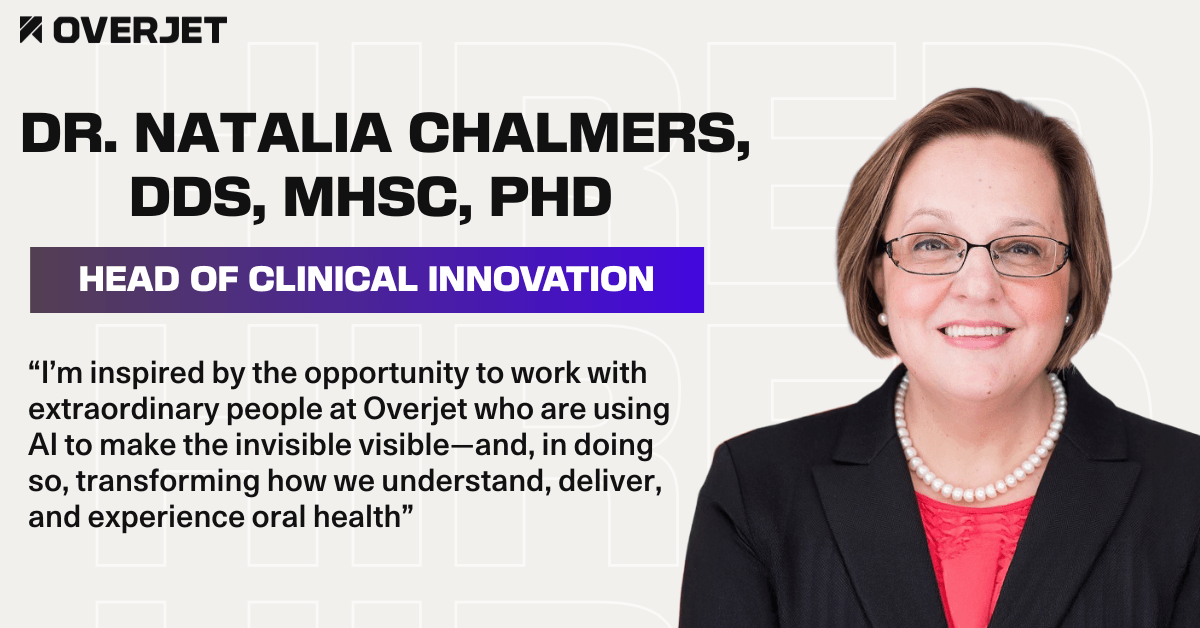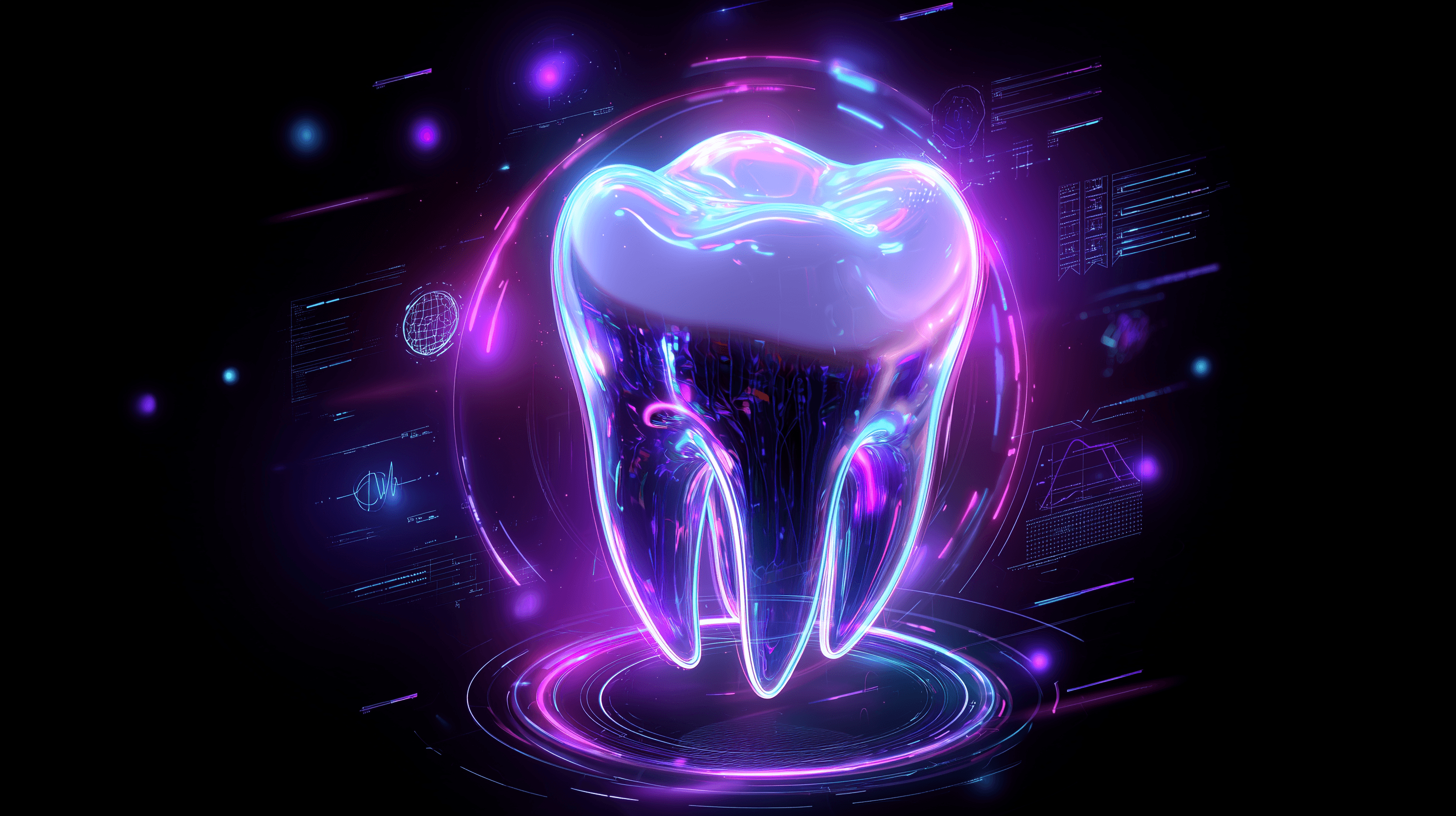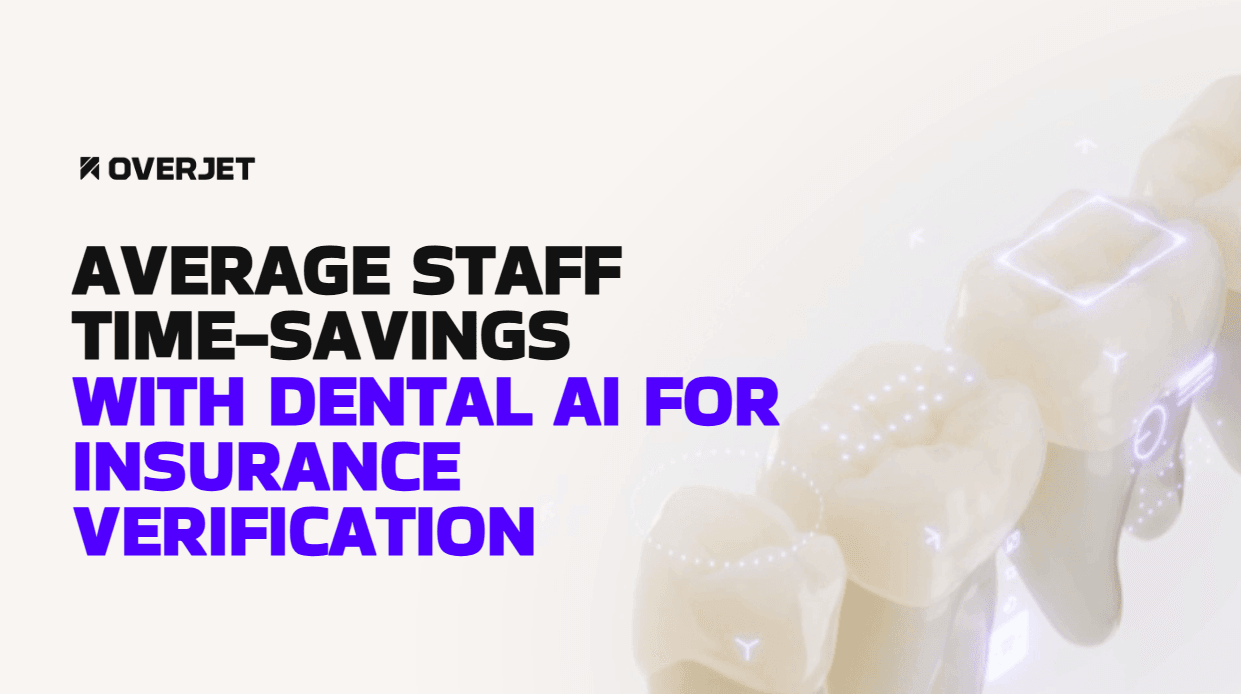Tooth decay, also known as dental caries, is one of the most prevalent chronic diseases in the world—impacting patients of all ages. Yet despite its frequency, it often goes undetected until it progresses to a point that requires more invasive and costly intervention.
Traditionally, caries detection relies heavily on clinical judgment and manual radiograph interpretation, which can lead to diagnostic variability and delayed treatment. Today, artificial intelligence (AI) is changing the game.
With advanced platforms like Overjet, dental teams are now equipped to detect tooth decay earlier, more accurately, and more consistently than ever before—ultimately improving patient outcomes and streamlining care.
Explore Overjet's Dental AI Software
How Tooth Decay Is Traditionally Diagnosed and Treated
For decades, the standard approach to diagnosing tooth decay has involved a combination of visual inspection, tactile probing, and radiographic analysis. Dentists typically examine the teeth for visible signs of demineralization or discoloration, use dental explorers to feel for soft spots, and rely on bitewing or periapical X-rays to identify decay not visible to the naked eye—particularly in interproximal areas.
Once decay is detected, treatment recommendations are based on the size, location, and severity of the lesion. Early-stage decay may be addressed with preventive interventions such as fluoride varnish, dietary counseling, or sealants. As decay progresses, more invasive procedures like fillings, inlays, onlays, crowns, or even root canals and extractions may be required.
While this traditional workflow has served dentistry for generations, it does come with important limitations:
Subtle or early lesions, especially between teeth, can be easily overlooked
Radiographic interpretation is subjective and depends heavily on the provider’s experience
Diagnostic variability across clinicians can lead to inconsistent care
Delayed detection may result in more complex and costly treatments
In an era when patients expect precision and efficiency, these challenges underscore the need for modern tools that support more accurate, consistent, and early detection—paving the way for artificial intelligence (AI) to play a transformative role in caries diagnosis and treatment planning.
Limitations of Traditional Detection Methods
While conventional methods for detecting tooth decay—such as visual exams, probing, and radiographic interpretation—remain widely used, they come with notable limitations that can impact both clinical outcomes and the patient experience.
Common Challenges of Traditional Caries Detection:
Missed Early Lesions Small or incipient caries, especially in interproximal or posterior regions, are difficult to detect with the naked eye or even on X-rays without advanced imaging tools. These early lesions often go unnoticed until they progress and require more invasive treatment.
Subjectivity in Interpretation Radiograph analysis is inherently subjective. Diagnostic accuracy can vary based on a clinician’s experience level, fatigue, or time constraints—leading to inconsistent identification of decay across providers.
Delayed Diagnosis and Treatment Without timely detection, caries can advance to deeper layers of the tooth, increasing the need for extensive procedures like crowns or root canals instead of simple fillings or preventive care.
Inconsistent Documentation Manual record-keeping and vague notes can hinder patient understanding and create challenges during insurance claims or audits. Poor documentation also complicates follow-up care and referrals.
These limitations don’t just affect the accuracy of diagnosis—they influence patient trust, treatment acceptance, and overall care quality. As dental practices seek to modernize, overcoming these gaps is essential—which is why many are turning to AI-driven diagnostic support to improve consistency, clarity, and early intervention.
How Dental AI Improves Tooth Decay Detection
To address the limitations of traditional caries detection, many dental practices are turning to artificial intelligence. Overjet’s FDA-cleared dental AI technology revolutionizes the diagnostic process by offering real-time, objective analysis of bitewing and periapical radiographs. This ensures greater diagnostic consistency and enables earlier, more precise detection of tooth decay.
Rather than relying solely on subjective interpretation, Overjet uses advanced algorithms to automatically identify areas of concern. The AI highlights potential decay with color-coded visual overlays, making it easy for providers to see—and for patients to understand—exactly where the problem lies.
How Overjet Enhances Caries Detection:
Instant Analysis Overjet scans radiographs in seconds, flagging suspicious areas of decay in real time during patient visits.
Enhanced Accuracy The AI is trained to detect subtle, early-stage lesions—especially those in interproximal areas that are commonly missed in traditional reviews.
Objective, Data-Driven Support By removing subjectivity, Overjet delivers consistent findings that providers can trust—and patients can believe.
Visual Communication Tools Color-coded overlays simplify complex diagnostics, helping providers explain findings more clearly and confidently.
By catching decay before it becomes symptomatic or advanced, Overjet enables dentists to offer minimally invasive, preventive treatments—improving outcomes, reducing patient anxiety, and building trust through transparency.
Impact of AI on Tooth Decay Treatment Planning
Early detection is the key to more effective, less invasive dental care—and AI is making that possible in ways never before achievable. With Overjet’s real-time, FDA-cleared analysis of radiographs, dental teams can identify decay earlier and with greater confidence, allowing for faster and more precise treatment planning.
Rather than waiting for symptoms to emerge or lesions to progress, providers using Overjet can present treatment options immediately—often during the same hygiene visit. This proactive approach shifts dentistry from reactive interventions to preventive, patient-centered care.
Benefits of AI-Driven Treatment Planning with Overjet:
Same-Day Diagnosis and Treatment Overjet’s instant analysis enables providers to identify decay and present treatment options during the initial visit—minimizing delays and improving scheduling efficiency.
Minimally Invasive Options Catching decay in its earliest stages opens the door to conservative treatment, such as fluoride therapy, sealants, or small restorations—before extensive damage occurs.
Higher Case Acceptance With AI-powered visual overlays, patients can clearly see the problem for themselves, making them more likely to proceed with care.
Standardized Decision-Making AI ensures treatment recommendations are based on objective, consistent criteria—reducing variability across providers and improving care continuity.
This smarter, faster workflow enhances both clinical outcomes and operational performance—helping practices deliver better care while driving production and growth.
Why Overjet Is the Best AI Solution for Tooth Decay Management
When it comes to modernizing the way dental practices detect and manage tooth decay, Overjet stands at the forefront of innovation. As the first and only dental AI platform FDA-cleared for both caries detection and bone level measurement, Overjet provides clinically validated accuracy that supports earlier diagnosis, more consistent treatment planning, and stronger patient communication.
Overjet doesn’t simply add a layer of automation—it transforms the diagnostic experience into a smarter, more scalable process that benefits providers, patients, and practices alike.
Why Leading Practices Choose Overjet:
Real-Time Visual Overlays Instantly highlights areas of decay on bitewing and periapical radiographs using color-coded annotations that integrate directly into your imaging software.
Seamless Integration Compatible with most major dental imaging and practice management systems, Overjet fits effortlessly into your existing clinical workflow.
Trusted Nationwide Used by top DSOs, private practices, and dental schools across the U.S., Overjet is a proven solution for organizations that prioritize clinical excellence.
Improved Diagnostic Consistency Reduces provider-to-provider variability with AI-driven insights that support standardized care and treatment decisions.
Measured Business Impact Practices report 10–20% increases in case acceptance, thanks to more confident diagnoses and clearer patient education.
Overjet isn’t just an AI tool—it’s a clinical partner that empowers your team to detect decay earlier, treat more effectively, and grow with confidence.
A Smarter Future for Tooth Decay Treatment
Tooth decay remains a leading cause of oral health decline—but with the help of AI, the future of diagnosis and treatment looks brighter. Overjet empowers dental teams to detect earlier, treat sooner, and engage patients more effectively, leading to better outcomes and stronger practice performance.
Ready to See Overjet's Dental AI in action?
Frequently Asked Questions (FAQs)
1. How does Overjet detect tooth decay?
Overjet uses FDA-cleared AI algorithms to analyze radiographs in real time, identifying caries with color-coded overlays that highlight areas of concern directly on bitewings and periapicals.
2. Can Overjet be used during hygiene appointments?
Yes. Overjet provides instant analysis during hygiene exams, allowing practices to present findings and initiate treatment discussions in the same visit.
3. Does Overjet improve case acceptance?
Absolutely. Practices using Overjet report 10–20% increases in case acceptance, largely due to improved patient understanding and trust built through AI-supported visuals.
4. Will Overjet integrate with my imaging software?
Yes. Overjet is compatible with most major dental imaging and practice management systems, ensuring a smooth integration with your existing workflow.
5. Is Overjet only for detecting decay?
No. In addition to caries detection, Overjet is also FDA-cleared for bone level measurement, supporting periodontal diagnosis and treatment planning as well.









